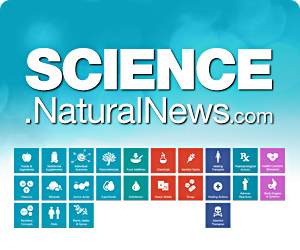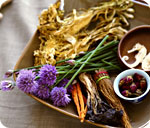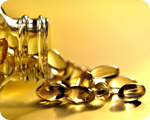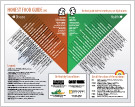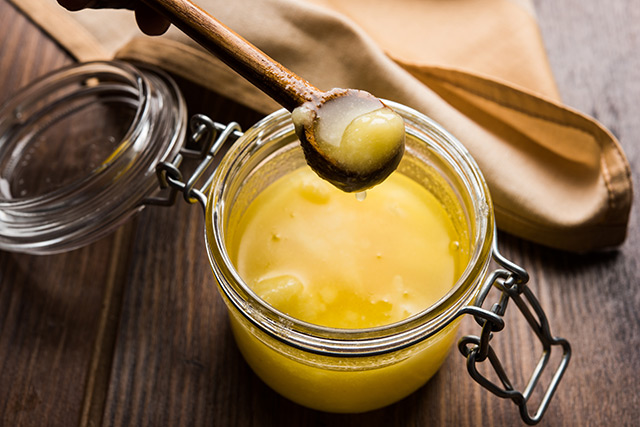
(Natural News) When it comes to food products that one would normally label as “healthy,” butter isn’t the first thing that would come to mind. It is, after all, near-synonymous to excess, and has been linked to hypertension and even obesity.
That might soon change, however, as more and more studies are now espousing the health-boosting benefits of butter, or, to be more specific, ghee.
Typically used in Indian cuisine, ghee is a type of clarified butter and is typically prepared by simmering butter, skimming off any impurities from the surface, and then collecting the clear liquid fat while discarding the solid impurities and residues that have settled at the bottom.
According to traditional Indian Ayurvedic medicine, ghee facilitates the strengthening of one’s “agni” or digestive fire, which, according to ancient Ayurvedic lore, helps the body eliminate waste, as well as liberate nutrients.
The Ayurvedic classic text Sushruta Samhita indicates that ghee is beneficial for the whole body, and even recommends it as the ultimate remedy for problems stemming from the pitta dosha – an imbalance of the element of fire and water within one’s self – such as inflammation, rashes, fevers and heartburn.
And it seems that it may have its basis in science, with a study published in Lipids in Health and Disease, showing that ghee – or specifically, its high conjugated linoleic acid-enriched version – may be used as a potential food for decreasing the risk of cardiovascular disease.
So, how does ghee affect the body? And what makes it such a beneficial foodstuff?
The power of the elements: Discover Colloidal Silver Mouthwash with quality, natural ingredients like Sangre de Drago sap, black walnut hulls, menthol crystals and more. Zero artificial sweeteners, colors or alcohol. Learn more at the Health Ranger Store and help support this news site.
- Ghee is rich in butyric acid
A key short-chain fatty acid (SCFA) butyric acid helps promote immunity within the digestive system by providing colon cells with up to 70 percent of their total energy needs. Also known as butyrate and butanoic acid, this key SCFA is also known to support healthy insulin levels and gallbladder function.
Short on ghee? This key SCFA is also found in parsnips and Parmesan cheese.
- Ghee enhances T-helper cell activity
Arguably the most important cells in adaptive immunity, T-helper cells are required for almost all adaptive immune responses. According to a paper published on Molecular Biology of The Cell, these cells not only help activate the secretion of antibodies and macrophages to destroy ingested microbes, they also help in the activation of cytotoxic T cells to kill infected target cells.
- Ghee helps manage cholesterol levels
The butyric acid in ghee assists in reducing fatty tissue by boosting thermogenesis and metabolism. This can result in the management of one’s cholesterol ratios, as well as the reduction of high blood pressure.
- Ghee is rich in conjugated linoleic acid and vitamin K2
A polyunsaturated omega-6 fatty acid, linoleic acid is used in the biosynthesis of prostaglandins and cell membranes, while vitamin K2, an essential nutrient found in animal-based food and fermented food products, is strongly associated with a reduced risk of heart disease. Together, these two promote tissue maintenance, which can then translate to reductions in inflammation and tumors.
How to make ghee
Ghee is typically easy to find in most health food stores as well as in the Asian section of your local markets. However, if ever you find yourself at a loss, you don’t need to worry – ghee is easy to make, provided, of course, that you start with good, high-quality butter derived from organic grass-fed cows. This will ensure that you are starting out with an already high-grade and clean product. (Related: Why butter is better and ways to eat more.)
Here’s a quick and easy recipe for ghee. (h/t to YogaJournal.com)
- Place 1-2 pounds of butter in a saucepan on low heat.
- Melt the butter until the white curds separate and sink to the bottom.
- Skim off any impurities that may rise to the surface.
- To test if the ghee is done, flick a drop of water into the pan: if it boils and evaporates immediately, the ghee is ready.
- Strain the ghee into a clean glass jar. Discard the curds.
- You can store the ghee without refrigeration for up to 12 months.
For more healthy alternatives to your favorite foods, visit CleanFoodWatch.com.
Sources include:






